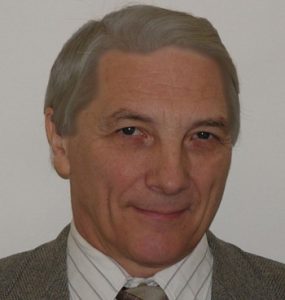Gábor Renner
After graduating from university, he began his career at the Electrical Industry Research Institute (VKI), where he dealt with semiconductor technology problems and their computer simulation.
In 1972, he joined the Institute of Computer Science and Automation (SZTAKI) of the Hungarian Academy of Sciences, where his research topic was computer calculations of magnetic fields and circuits. From 1976, he began to deal with the topics of computational geometry, geometric design and reconstruction. He developed methods for the computer description, design, generation, editing and mechanical engineering (CAD/CAM) applications of free-form curves and surfaces. He achieved new results in solving geometric optimization problems using genetic algorithms.
He participated and played an initiating role in the establishment of the Hungarian school of Reverse Engineering, in the research and practical application of geometric reconstruction methods from measurement data. He was a participant or manager of numerous domestic and foreign industrial development or other application projects: for example, a system for designing and NC machining complex industrial geometric shapes, a shoe industry and glass grinding design system, and he managed the design of a knee joint prosthesis with a new geometry.
He has published his research results in international scientific journals and conferences. He has given numerous lectures and seminars at foreign universities, research institutes and conferences. He has been regularly invited to review publications in international journals and conferences, as well as research proposals. He has participated in the editorial boards of several international conferences and journals, and was a member of the Automation and Computer Engineering Committee of the Hungarian Academy of Sciences.
He is credited with introducing the knowledge of computational geometry and geometric design into Hungarian higher education; he developed and presented the course “Introduction to Geometric Modeling” at ELTE, and the course “CAD Technologies” at the Budapest University of Technology (BME).
He obtained his doctoral degree from BME in 1972 and his technical candidate degree in 1989;
In 2004, he received the Széchenyi Professorship Scholarship.
He is the founding chairman of the NJSZT Computer Graphics and Geometry (GRAFGEO) Department. The Department, which also functions as the Hungarian national organization of the international computer society EUROGRAPHICS, organizes the Hungarian Computer Graphics and Geometry Conference every two years.
In 2011, the NJSZT awarded him the Neumann Prize.
- His favorite pastime is music; he graduated from the conservatory with a degree in piano and organ.
Created: 2019.02.21. 15:29
Last modified: 2020.10.25. 21:04

